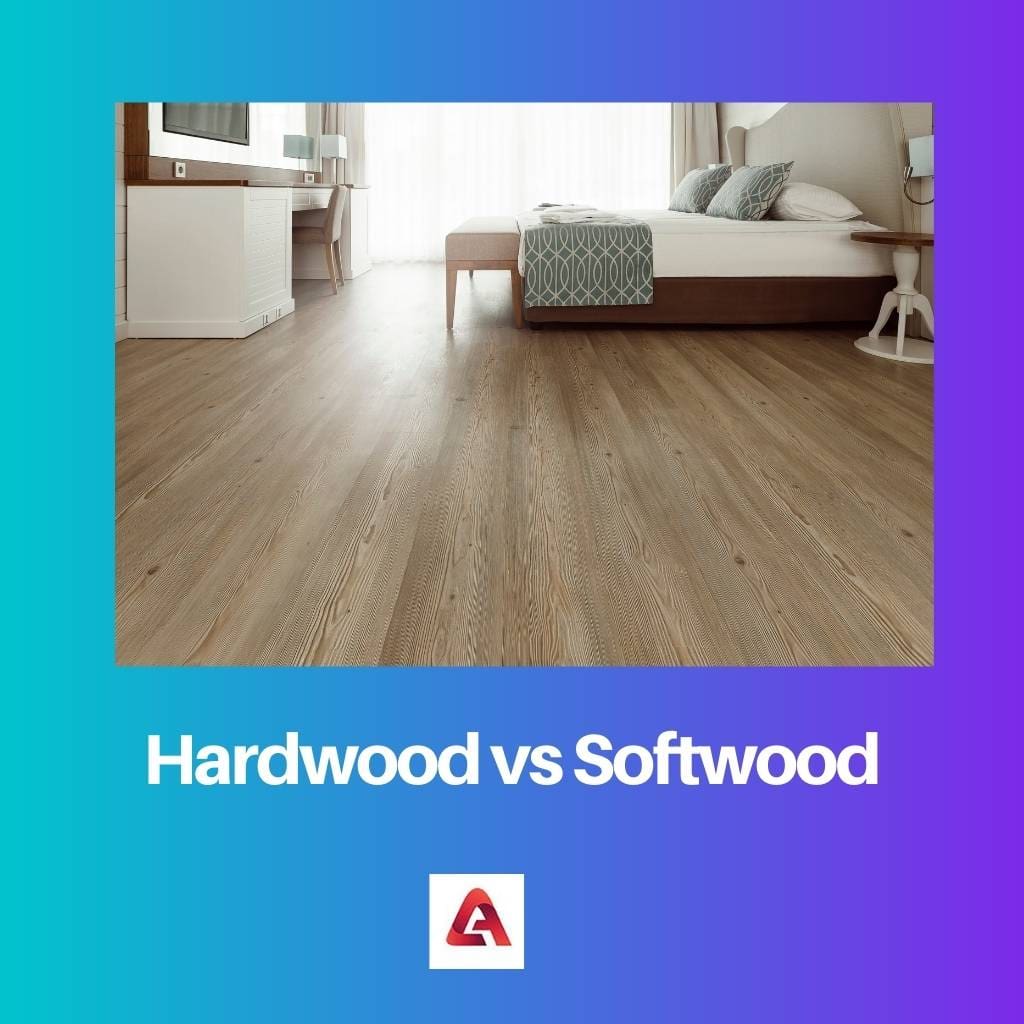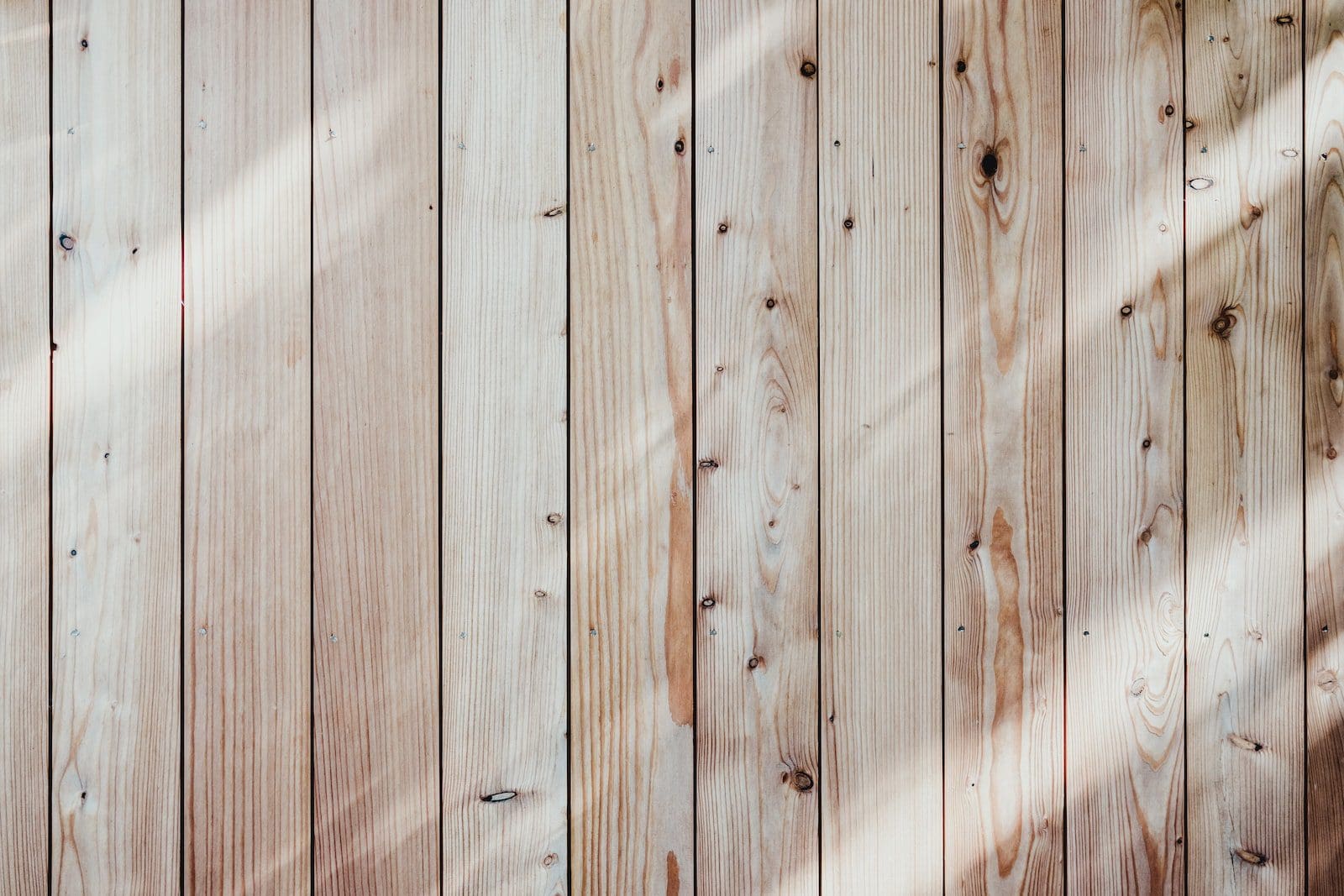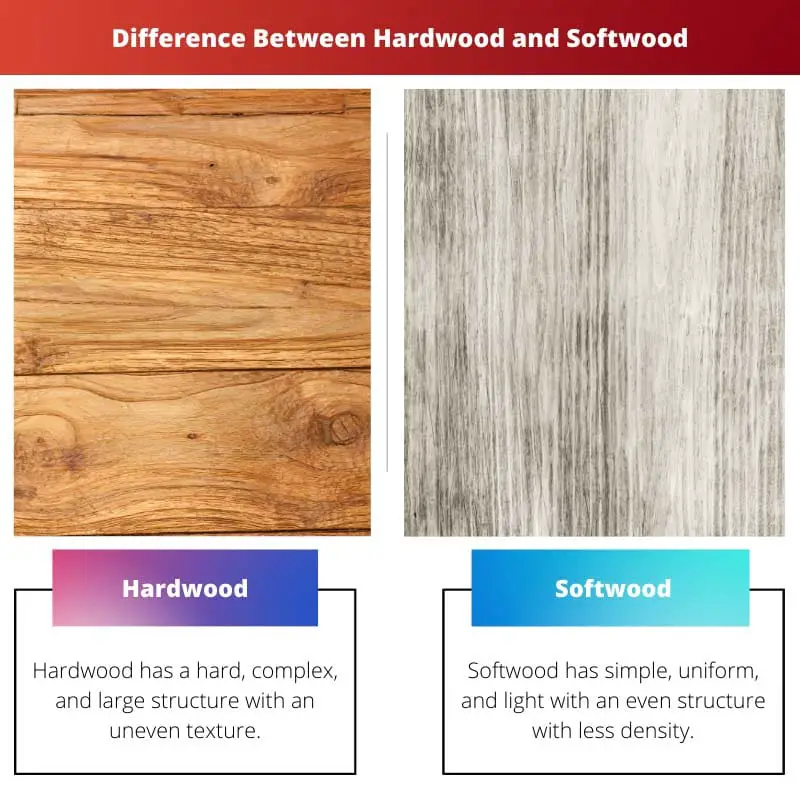Wood is one of the most widely used objects of nature, and it is also known as the secondary xylem of plants. Wood is mainly classified based on its composition, structure, and time of production.
Key Takeaways
- Hardwood comes from deciduous trees, while softwood comes from coniferous trees.
- Hardwood is denser and more durable than softwood, but also more expensive.
- Softwood is commonly used in construction and furniture-making, while hardwood is favored for flooring, cabinetry, and high-end furniture.
Hardwood vs Softwood
Hardwood is derived from deciduous trees that lose their leaves annually (like oak or maple), is denser and used for durable construction. Softwood comes from coniferous trees (like pine or spruce) and is lighter and softer, ideal for indoor use and furniture.

Hardwood is hard and complex, with an uneven texture. It is obtained from the trees of dicotyledon angiosperm or flowering plants.
Softwood is soft with a light texture. It is obtained from the trees of monocotyledon gymnosperms or non-flowering plants.
Comparison Table
| Parameters of Comparison | Hardwood | Softwood |
|---|---|---|
| Anatomy | Hardwood has a hard, complex, and large structure with an uneven texture. | Softwood has simple, uniform, and light with an even structure with less density. |
| Water Transport | Vessels and tracheids transport water in Hardwood. | Tracheids transports water in Softwood. |
| Plant Wood | Hardwood is from angiosperm or flowering plants. | Softwood is from gymnosperms or non-flowering plants. |
| Resistance | Hardwood has greater resistance to both heat and environmental changes. | Softwood has very low resistance to both heat and environmental changes. |
| Color | Hardwood is darker in color. | Softwood is lighter in color. |
| Cost | Hardwood is expensive. | Softwood is cheap. |
| Examples | Eucalyptus, teak, oak, and maple. | Sequoia, maidenhair tree, pine, and cedar. |
What is Hardwood?
Hardwood is obtained from the woods of angiosperm or flowering plants. In angiosperm or flowering plants, the seeds are covered by fruits.
It has two cotyledons in its seeds, and fertilization is through pollination. Hardwood has a diplontic life cycle with a double fertilization process as two fusions are involved.
Hardwood transports water in different parts of the tree through transporting elements called vessels and tracheids.
Vessels and tracheids are elongated, long cylindrical tube-like cells or structures with thick, lignified walls without protoplasm.
Hardwood is used to make musical instruments such as violins, harmoniums, and pianos, manufacturing furniture, sports goods, rifle parts, and guns.

What is Softwood?
Softwood is obtained from the woods of gymnosperms or non-flowering plants. In gymnosperms, the ovules are not covered by the ovary, and they remain unprotected before and after fertilization.
Softwood is lighter in color due to less deposition of chemical substances. Softwood is a monocotyledon gymnosperm or non-flowering plant.
Softwood transports water and minerals through a transporting element called tracheids. Tracheids are long, broad, and wide tube-like structures with heavy, thickened walls.
Softwood grows faster and is easily available and cheap. Softwood is a widely used product in the pencil industry, match industry, and music industry.

Main Differences Between Hardwood and Softwood
- Hardwood tends to grow very slowly. On the other hand, Softwood tends to grow fastly.
- Hardwood is expensive. On the other hand, Softwood is cheap.

- https://link.springer.com/article/10.1007/BF00833502
- https://pubs.acs.org/doi/abs/10.1021/acssuschemeng.6b01205
- https://link.springer.com/article/10.1007/s12649-020-00955-0

This article stands out for its insightful and comprehensive examination of the features and uses of hardwood and softwood.
I couldn’t agree more, Murray Jessica. It’s an educational piece that truly captivates the readers.
Well articulated, Murray Jessica. The depth of knowledge showcased in this article is commendable.
This article exhibits a well-researched and educational approach to understanding the distinctions between hardwood and softwood.
A thorough exploration of the characteristics and practical uses of hardwood and softwood. The detailed information presented is commendable.
I concur, Damien Smith. The content is both informative and engaging.
Absolutely, Damien Smith. The comparison table provides a clear overview of their differences.
The article delivers a meticulous appraisal of the botanical, structural, and application-based disparities between hardwood and softwood, making it a worthwhile read.
Absolutely, Dwilkinson. It’s an exemplary demonstration of the differences between these natural substances.
This article provides a detailed and logical comparison of hardwood and softwood, enhancing our understanding of these natural materials.
I couldn’t agree more, Rachel Johnson. It exceeds expectations in delivering valuable insights.
A well-crafted analysis, Rachel Johnson. It’s an essential read for anyone seeking knowledge on wood classification.
An informative and thorough explanation of the characteristics and uses of hardwood and softwood. I appreciate the clear comparison and detailed description.
I completely agree, Michael34. This article provides a comprehensive understanding of these essential natural materials.
An excellent in-depth analysis of hardwood and softwood. The botanical differences and their impact on applications are clearly presented.
Well-articulated, Harris Finley. This article provides valuable insights into the complexities of these natural materials.
I couldn’t agree more, Harris Finley. It’s a truly enlightening read.
The botanical details and their relevance to the properties of hardwood and softwood are expertly explained in this article.
Well said, Jackson Amy. The thoroughness of the content elevates its educational value.
I fully agree, Jackson Amy. It’s a superb portrayal of the subject matter.
The biological and structural nuances of hardwood and softwood are effectively elucidated in this article, offering a comprehensive understanding of these materials.
Precisely, Ebutler. The clarity of information makes it an intellectually enriching piece.
I wholeheartedly agree, Ebutler. The depth of the content is truly remarkable.
This article effectively distinguishes between hardwood and softwood, highlighting the importance of their respective structures and uses.
I agree, Robertson Jasmine. The detailed comparison table and the examples provided make it easier to comprehend.